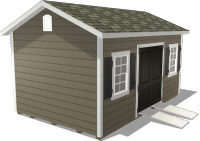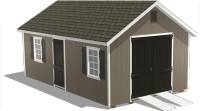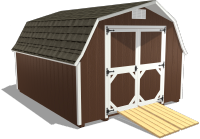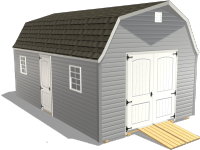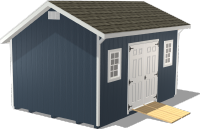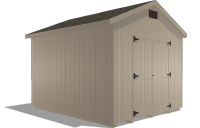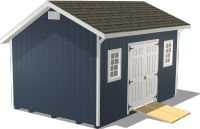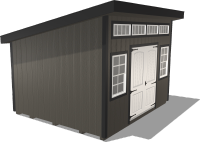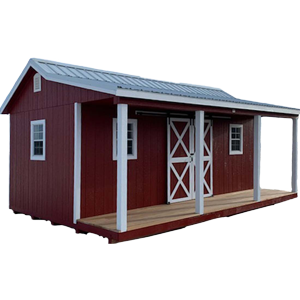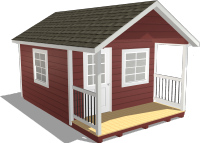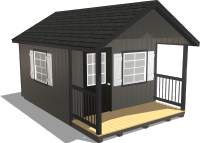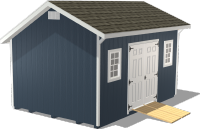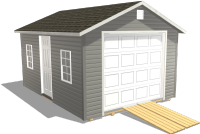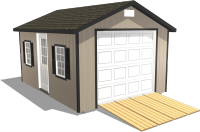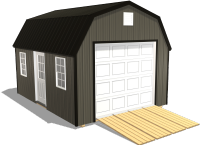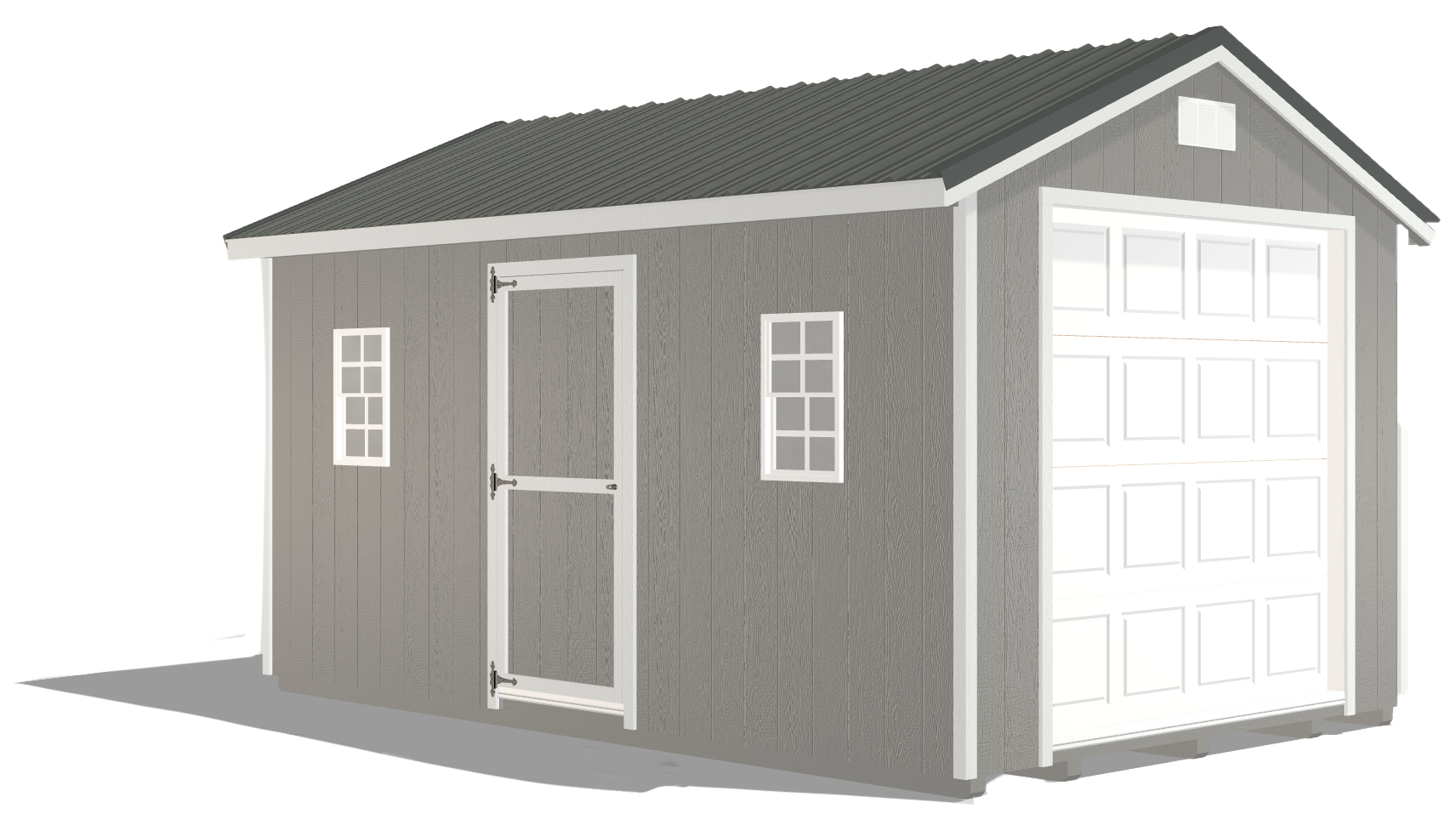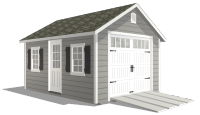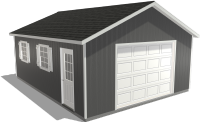Greenhouse Design 101: 5 Top Features & Tips
by Dakota Storage Buildings, on August 14, 2024

Creating and maintaining optimal growing environments for plants is an exciting journey, especially when it comes to greenhouse design. However, it can sometimes feel overwhelming to identify the essential features and best practices necessary for maximizing plant growth and productivity. Many gardeners face challenges like greenhouse ventilation, temperature regulation, and space utilization, but with the right knowledge and resources, you can create the perfect environment for your greenhouse. We want to outline five essential features and best practices, empowering you to create a thriving greenhouse environment and achieve your gardening goals with confidence.
1. What to Look for in a Top-Quality Greenhouse Design
Good greenhouse design plays a crucial role in optimizing plant growth and productivity. Unlike traditional outdoor gardening, our greenhouses offer a controlled environment where temperature, humidity, and light can be carefully managed to create ideal growing conditions. This controlled environment allows you to extend their growing season, protect plants from harsh weather, and cultivate a wider variety of plants. Whether you are growing tropical plants or vegetables, there are numerous benefits of a well-designed, pre-built greenhouse.
With our pre-built greenhouses, these benefits are seamlessly integrated through proper planning and design. Our thoughtfully designed greenhouses ensure that your plants receive adequate light, air circulation, and temperature regulation, which is critical for healthy growth. Choosing a poorly planned greenhouse can lead to significant challenges.
- Improper layout can result in poor air circulation, leading to humidity buildup and mold growth.
- Inadequate temperature control can cause extreme fluctuations, stressing plants and hindering their growth.
- Insufficient light exposure can lead to weak, spindly plants that struggle to thrive.
2. Strategic Planning to Meet Your Gardening Goals

Before investing in a greenhouse, defining your gardening objectives and assessing your available space is essential. Start by considering the types of plants you wish to grow and their specific environmental requirements. Some plants may thrive in high humidity, while others prefer drier conditions. Knowing the needs of your plants will help you choose a greenhouse that provides the optimal growing environment. Additionally, consider your gardening goals, such as whether you want to grow vegetables year-round, cultivate exotic plants, or create a space for starting seeds. These goals will guide your decisions on the necessary features and design elements of your greenhouse.
The harsh seasons we experience will influence your greenhouse design. During the extreme cold winters, you will need a heated greenhouse. Consider incorporating additional insulation and heating systems to keep the interior warm. During the summer, effective greenhouse ventilation and shading will be crucial. Conduct a thorough site evaluation to determine the best location for your greenhouse. Consider factors like sunlight exposure, wind patterns, and proximity to water sources. Ensure that the site receives adequate sunlight throughout the day, is sheltered from strong winds, and has easy access to water for irrigation. By carefully assessing your needs and goals, you can design a greenhouse that meets your specific requirements and provides a productive and enjoyable gardening experience.
Explore heating and cooling strategies for your greenhouse.
3. Essential Features of Effective Greenhouse Design
To create an effective greenhouse environment, you must carefully consider various features that contribute to optimal plant growth. By focusing on structural integrity, environmental controls, lighting, and irrigation, gardeners can ensure their greenhouse supports healthy and productive plants.
![]()
Structural Considerations
Greenhouses come in various styles, including freestanding and lean-to designs. Freestanding greenhouses offer more flexibility in terms of location and size, while lean-to greenhouses can be attached to an existing structure. When choosing a greenhouse, look for high-quality materials such as glass, polycarbonate, and plastic. Glass provides excellent light transmission but is more fragile and expensive. Polycarbonate is durable and provides good insulation. Plastic is the most affordable option but is less durable and can degrade quickly. Ensure your greenhouse is appropriately sized to accommodate your plants and gardening activities.

Environmental Control Systems
Effective environmental control is essential for maintaining optimal growing conditions year-round. Greenhouse ventilation, temperature, and humidity are critical factors that influence plant health. Consider installing heating and cooling systems to regulate temperature, such as heaters, fans, and evaporative coolers. Proper greenhouse ventilation is vital to prevent humidity buildup and promote air circulation. This can be achieved by using vents, fans, and automatic vent openers.
Discover how proper ventilation enhances greenhouse efficiency.
![]()
Lighting Solutions
Both natural and supplemental lighting play essential roles in greenhouse environments. Maximize natural light exposure by positioning your greenhouse to capture the most sunlight and incorporating design features such as skylights and reflective surfaces. For supplemental lighting, consider LED grow lights, which are energy-efficient and provide the full spectrum of light needed for plant growth. Position these lights to ensure even coverage and avoid shadowing.
![]()
Watering and Irrigation Systems
Efficient watering and irrigation systems are crucial for maintaining plant health and minimizing water waste. Drip irrigation and misting systems are popular choices for greenhouses, as they deliver water directly to the plant roots and reduce evaporation. Design your irrigation system to meet the specific needs of your plants, and consider installing timers and sensors to automate watering schedules.
4. Creating an Efficient Greenhouse Layout for Optimal Growth

Optimizing the layout of your greenhouse is essential for efficient plant growth and management. A well-thought-out layout ensures that every square foot of your greenhouse is utilized effectively, creating a harmonious environment where plants can thrive. Start by organizing plant beds, pathways, and work areas to maximize accessibility and minimize clutter. Clear, wide pathways make it easier to navigate the greenhouse and perform necessary tasks like watering, pruning, and harvesting without disturbing other plants. Utilize vertical space by incorporating shelving, hanging baskets, and trellising systems. Shelving units can hold smaller pots and seed trays, freeing up valuable floor space for larger plants. Hanging baskets are perfect for trailing plants or those that prefer a slightly elevated position. Trellising systems support climbing plants, encouraging them to grow upwards rather than sprawling across the ground.
Consider zoning your greenhouse to create distinct areas for different types of plants based on their light, temperature, and humidity needs. Group shade-loving plants in one section and sun-loving plants in another, using greenhouse shade cloths to create the right conditions for each zone. This strategic placement helps ensure that each plant receives the optimal care and environment it requires. Incorporating movable benches or tables can provide flexibility in your greenhouse layout, allowing you to reconfigure the space as needed.
Learn how to use greenhouse shade cloths to cultivate thriving plants.
5. Adopting Sustainable Practices for a Productive Greenhouse
Incorporating sustainability into your greenhouse design can reduce environmental impact and lower operating costs. Renewable energy sources can significantly decrease reliance on non-renewable resources and reduce utility bills. Solar panels can power lighting, fans, and other electrical systems within the greenhouse, while geothermal heating systems use the earth’s stable underground temperatures to provide a heated greenhouse. Implementing water-saving techniques, such as rainwater harvesting and efficient irrigation systems, helps conserve water. Rainwater harvesting systems collect and store rainwater for irrigation. Drip irrigation and misting systems deliver water directly to plant roots, minimizing evaporation and runoff.
Using eco-friendly materials and practices can further promote a sustainable gardening environment. Opt for recycled or sustainably sourced materials for greenhouse features. For instance, reclaimed wood or recycled plastic can be used for shelving, benches, and planters. Incorporate organic gardening practices, such as composting and using natural pest control methods, to reduce chemical use and promote a healthier ecosystem. Composting kitchen scraps and garden waste creates nutrient-rich soil amendments that can enhance plant growth and soil health. By embracing sustainable practices, gardeners can create a greenhouse that is efficient, productive, and environmentally responsible.

Thoughtful greenhouse design is crucial for successful gardening. By incorporating essential features such as structural considerations, environmental control systems, lighting solutions, and efficient irrigation, you can create an optimal growing environment for your plants. A well-designed greenhouse maximizes plant health and productivity and enhances your overall gardening experience.
We have incorporated all these considerations into our greenhouse options to ensure they meet your specific needs and goals. Configure your own greenhouse based on your style and preferences with our 3D Configurator tool. With the right design and features, you can create the perfect environment for your gardening needs and enjoy thriving plants year-round. Take the next step towards achieving your gardening dreams and make your greenhouse a haven for your plants.



